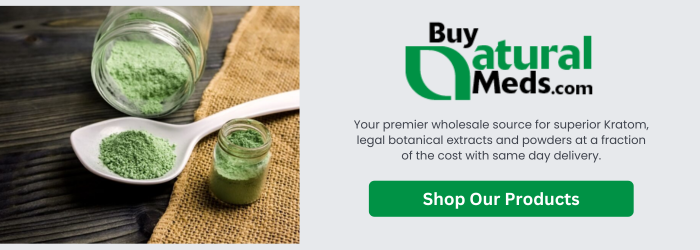
What is Kratom?
Kratom, scientifically known as Mitragyna speciosa, is a tropical tree native to Southeast Asia, primarily found in Thailand, Malaysia, Indonesia, and Papua New Guinea. The leaves of the kratom tree have been used for centuries by the local populations for their medicinal properties. Traditionally, the leaves are chewed fresh or dried and brewed into a tea to help combat fatigue and improve work productivity. In some cultures, kratom is also used in various ceremonies and to treat various medical conditions such as pain, diarrhea, and opioid withdrawal. The active compounds in kratom leaves are alkaloids, primarily mitragynine and 7-hydroxymitragynine. These alkaloids interact with opioid receptors in the brain, producing sedation, pleasure, and decreased pain when taken in high doses. However, at lower doses, kratom acts as a stimulant, providing increased energy, alertness, and sociability. Despite its opioid-like effects, kratom is not an opioid. Its mechanism on the receptors is more selective and less extensive, which might explain its lower potential for dependence compared to traditional opioids. The varying effects of kratom are highly dose-dependent and also vary significantly among different strains, which can be confusing for potential users. The balance between stimulant-like and sedative effects, along with its potential therapeutic benefits, makes kratom a unique and controversial herb. The debate over its safety, legality, and medical potential is ongoing in many countries, reflecting a complex interplay between traditional uses, emerging research, and public health considerations.
Extraction Methods
Extraction methods for kratom are crucial for producing kratom extract, a concentrated form of the active ingredients found in the kratom leaves. These methods are designed to pull out the alkaloids, primarily mitragynine and 7-hydroxymitragynine, which are responsible for the plant's effects. The concentration of these alkaloids makes kratom extracts more potent than the standard leaf or powder forms. One common extraction method is the water-based extraction. This process involves brewing the crushed or powdered plant material in water, often followed by a straining process to remove the solid particles. The liquid is then simmered down to produce a thicker, more concentrated extract. This method is popular due to its simplicity and the safety of the solvents used. Another method is the alcohol extraction, which uses ethanol or a similar solvent to extract the alkaloids. This method can result in a more potent extract than water-based extraction, as alcohol can dissolve both fat-soluble and water-soluble components. After mixing the plant material with alcohol, the mixture is allowed to sit for an extended period before the solids are filtered out, and the alcohol is evaporated, leaving behind a concentrated extract. CO2 extraction is a more sophisticated technique that uses pressurized carbon dioxide to pull alkaloids from the plant. This method is highly efficient and can be fine-tuned to target specific alkaloids, resulting in a highly pure and potent extract. CO2 extraction is generally more expensive and requires more technical expertise and equipment than other methods. Each extraction method has its advantages and is chosen based on the desired purity, potency, and type of extract being produced. The choice of method can significantly influence the final product's quality, efficacy, and safety.
Types of Kratom Extracts
Kratom extracts are concentrated forms of kratom, a natural substance derived from the leaves of the Mitragyna speciosa tree, which is native to Southeast Asia. These extracts are created by boiling down the kratom leaves or powder to increase the concentration of the active alkaloids, primarily mitragynine and 7-hydroxymitragynine. The purpose of creating extracts is to provide a more potent, effective product that requires smaller dosages to achieve desired effects. There are several types of kratom extracts, each differentiated by the method of extraction and the form it takes. Some of the most common types include: 1. **Resin Extracts**: This is a sticky substance that results from a long boiling process of kratom leaves in water. It is highly concentrated and potent, often used in smaller doses compared to raw kratom powder. 2. **Tincture Extracts**: These are liquid extracts made by dissolving kratom in a solution of alcohol or water. Tinctures are convenient to use, as they can be easily measured and ingested. They also tend to act faster than other forms of extracts. 3. **Powder Extracts**: After the extraction process, the resulting product can be dried and ground into a fine powder. This powder can be much more potent than traditional kratom powder, depending on the concentration of the extract. 4. **Enhanced Leaf Extracts**: This involves adding a highly concentrated extract powder to regular kratom leaves or powder, enhancing the overall alkaloid content of the product. This type of extract is popular among users who prefer a strong and quick effect but still enjoy the natural aspects of kratom. Understanding the various types of kratom extracts is essential for users who are looking to achieve specific effects. Each type offers different benefits and can be suited for various purposes, from pain relief and mood enhancement to increased energy and focus. It is important for users to consider the potency and effects of each type of extract to make an informed decision about which product might be best suited for their needs.
Uses and Effects
Kratom extract, derived from the leaves of the Mitragyna speciosa tree, is known for its unique combination of pharmacological effects. Depending on the dosage and the specific strain, the effects can range from stimulating to sedative. At lower doses, kratom extract is often used for its stimulating effects. Users report increased energy, alertness, and sociability, which makes it popular among those who need to endure long hours of work or study. As the dosage increases, the effects of kratom extract tend to become more sedative. This includes pain relief, relaxation, and a general feeling of well-being. This sedative effect is why many people use kratom extract to manage pain or help with sleep disorders such as insomnia. The active compounds in kratom, primarily mitragynine and 7-hydroxymitragynine, interact with opioid receptors in the brain, leading to these sedative effects, although it's worth noting that kratom does not belong to the opioid class of drugs. Moreover, kratom extract has been used traditionally in Southeast Asia for medicinal purposes. It has been utilized to combat fatigue and improve work productivity among rural populations. In traditional settings, it has also been used in rituals and ceremonies. Modern users, particularly in Western countries, have adopted kratom for its potential to alleviate symptoms of anxiety and depression, although more scientific studies are needed to fully understand its efficacy and safety profile. Despite its potential benefits, kratom extract can also have adverse effects, particularly when used in large quantities or over extended periods. These can include nausea, itching, loss of appetite, and increased urination. More severe side effects might include liver damage, changes in heart rate and blood pressure, and psychological dependency. As with any supplement, it is crucial for users to approach kratom extract use with caution, ideally under the guidance of a healthcare professional.
### Legal Status and Regulations The legal status and regulations of kratom vary significantly around the world and even within countries. Kratom, a plant native to Southeast Asia, has been used traditionally for its stimulant and opioid-like effects. In the United States, kratom is not regulated by the federal government as a controlled substance, which leads to a varying legal status across different states. Some states have banned kratom altogether, including Alabama, Arkansas, Indiana, Rhode Island, Vermont, and Wisconsin. Other states have regulations that allow the use of kratom but with restrictions, such as age limits or requiring labels that disclose health risks. Internationally, the legal status of kratom is even more diverse. In its native countries like Thailand, Malaysia, and Myanmar, kratom is heavily regulated and mostly illegal. However, recent years have seen some changes. For example, Thailand decriminalized kratom in 2021, allowing its use for medicinal purposes. On the other hand, countries like Australia and several European nations have outright bans on the importation, sale, and possession of kratom. The varying legal landscape is often a reflection of differing government policies on drug control and public health. Controversies surrounding kratom largely stem from its potential for abuse and dependency, balanced against its use as a pain reliever and a withdrawal aid for opioids. As research continues and public opinion shifts, regulations may change, impacting the accessibility and legality of kratom globally. The ongoing debate over kratom's legal status makes it an interesting subject for both legal and medical observers, highlighting the challenges of regulating a substance that is seen by some as a beneficial herbal remedy and by others as a dangerous drug.


